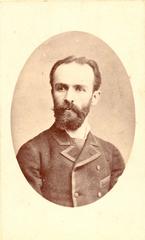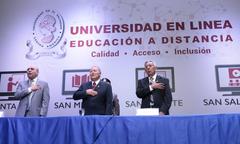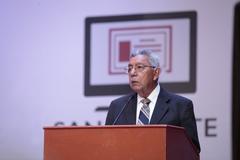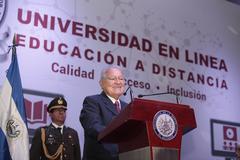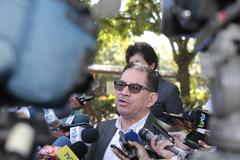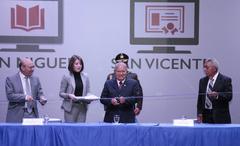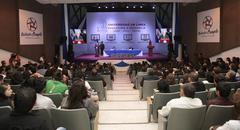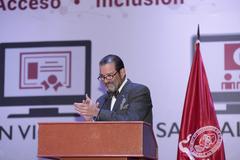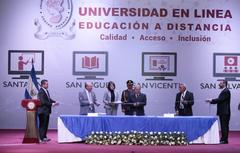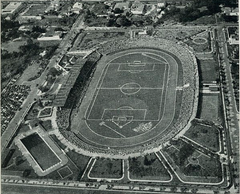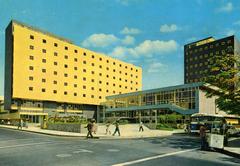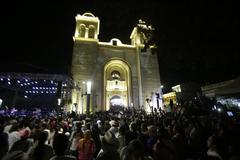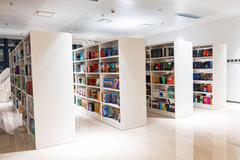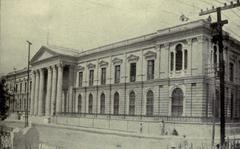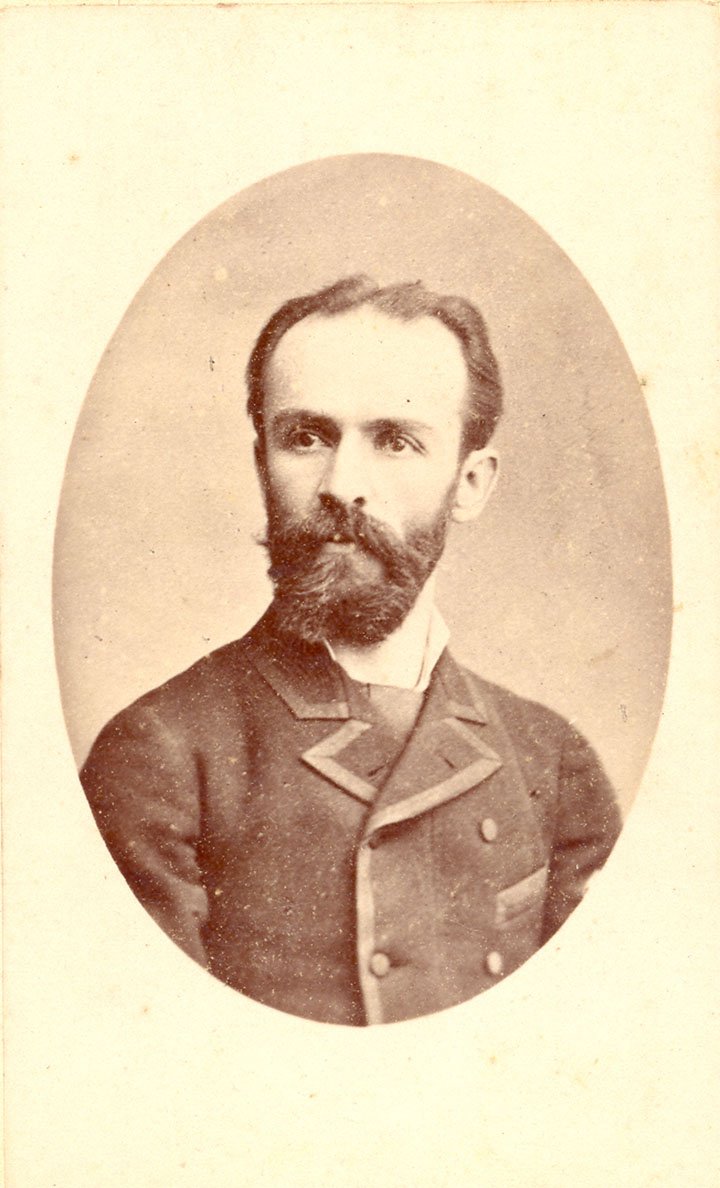
University of El Salvador Visiting Hours, Tickets, and Historical Sites in San Salvador
Date: 14/06/2025
Introduction
The University of El Salvador (Universidad de El Salvador, UES) is a cornerstone of Salvadoran higher education and an essential cultural landmark in the heart of San Salvador. Founded in 1841, UES is the oldest and largest public university in the country, embodying the nation’s commitment to academic excellence, social progress, and cultural heritage. Its campus is a living testament to El Salvador’s intellectual and political evolution, featuring striking architecture, public art, and a vibrant community life. This guide provides all the necessary details for visiting UES, including hours, tickets, accessibility, safety, and nearby attractions, ensuring a rewarding experience for travelers, students, and culture seekers alike.
Table of Contents
- Historical Background
- Campus Highlights and Layout
- Visitor Information
- Nearby Attractions
- Frequently Asked Questions (FAQ)
- Visual and Media Recommendations
- Travel Tips and Final Advice
- References
Historical Background
Founding and Evolution
Established in 1841, the University of El Salvador was created to serve the nation’s post-independence needs for higher education and professional training. Over the decades, UES expanded from an initial focus on law, medicine, and theology to a comprehensive institution now offering over 169 degree programs and serving more than 80,000 students (TopUniversities).
Role in National and Social History
UES has played a central role in El Salvador’s political and social life, especially during the civil unrest of the 1970s and the civil war era. The university was a focal point for social movements, student activism, and intellectual debate, often at great risk to its community (Britannica). Its legacy of advocacy and resistance continues to shape the nation’s modern identity.
Academic and Cultural Significance
As the country’s only public university, UES is a vital engine of social mobility and regional development (TopUniversities). It is well known for its research in social sciences, environmental studies, and public health, as well as its commitment to accessible education through outreach and scholarship programs (StudyAbroad365).
Campus Highlights and Layout
Architecture and Setting
The main campus, Ciudad Universitaria, is centrally located and easily accessible via public transport. Its architectural style ranges from modernist to utilitarian, punctuated by green spaces, plazas, and prominent murals that document El Salvador’s struggles and aspirations (uniRank).
Key Facilities
- Faculties: Nine main faculties, including Medicine, Engineering, Law, Arts, and more, each with specialized buildings and resources.
- Central Library: Open to visitors for reading and quiet study; some sections require university affiliation.
- Murals and Monuments: Powerful artworks and memorials, such as the tribute to the 1975 student massacre, offer insight into the university’s activist spirit (Wikipedia; NutshellApp).
- Cultural Centers: Art galleries, auditoriums, and performance spaces host exhibitions, concerts, and theater.
- Green Spaces and Plazas: Relaxing gardens and central plazas foster community and host regular events.
Visitor Information
Location and Accessibility
- Address: Boulevard de los Héroes, San Salvador.
- Getting There: Easily reached by bus, taxi, or ride-sharing. The campus is walkable and mostly flat, with ramps in newer buildings for wheelchair access (uniRank).
- Parking: Limited on-site; public transport is recommended during peak hours.
Visiting Hours and Admission
- Hours: Monday to Friday, 8:00 AM to 5:00 PM. Some sources note campus accessibility from 7:00 AM to 6:00 PM; check ahead for special events or holiday schedules.
- Entry Fee: General admission is free. The Museum of Popular Art charges a modest fee (typically under $2 USD) (Nomadic Matt).
- Guided Tours: While formal tours are rare, self-guided visits are encouraged. Some student-led events and local tour operators include UES in broader city tours.
Campus Amenities
- Dining: Multiple cafeterias and food stalls serve traditional Salvadoran cuisine at affordable prices (pupusas, snacks, drinks).
- Restrooms: Available in main buildings; facilities are basic.
- Wi-Fi: Available in select areas; mobile data is more reliable for visitors.
- Shops: Campus bookstore and small shops carry snacks and souvenirs.
Safety and Etiquette
- Safety: The university and surrounding areas are considered safe during daylight hours, with security personnel present. Petty theft is rare but possible—keep valuables secure and use main entrances (Xplrverse).
- Neighborhood Safety: Stick to well-trafficked areas and arrange transportation for evening events (Cat Is Out of the Office).
- Etiquette: Ask permission before photographing people or entering classrooms. Spanish is the primary language; basic phrases are appreciated (Lonely Planet).
Nearby Attractions
The central location of UES makes it an excellent starting point for exploring San Salvador’s historic and cultural sites:
- National Museum of Anthropology
- Metropolitan Cathedral
- Monument to the Revolution
- Zona Rosa district
- National Palace
- Museo de la Palabra y la Imagen
- Handicraft markets
These attractions offer further insights into the country’s history, art, and daily life (Landmarks Architects; DreamBigTravelFarBlog).
Frequently Asked Questions (FAQ)
Q: What are the University of El Salvador’s visiting hours?
A: Monday to Friday, 8:00 AM to 5:00 PM (some sources extend to 6:00 PM); closed on weekends and public holidays.
Q: Is there an entry fee?
A: General campus access is free. Certain museums or events may charge a small fee.
Q: Are guided tours available?
A: Not regularly, but self-guided exploration is welcome. Student-led or third-party tours may be available during events.
Q: How accessible is the campus?
A: Mostly accessible with ramps and walkways; some older buildings may have limited facilities.
Q: Is the campus safe for visitors?
A: Yes, with standard precautions. Security personnel are on-site during open hours.
Q: Are there food and restroom facilities?
A: Yes, several cafeterias and basic restrooms are available.
Q: What language is spoken?
A: Spanish is predominant; English is spoken by some staff and students.
Visual and Media Recommendations
For an enhanced visit or online experience, seek out:
- Photos of the Central Library, murals, and plazas
- Virtual campus tours and interactive maps on the official website
- SEO-optimized alt text for images, such as “Murals at University of El Salvador campus reflecting social activism”
Travel Tips and Final Advice
- Best Time to Visit: The dry season (November–April) for pleasant weather (FabFunFacts).
- Dress Code: Comfortable, modest attire recommended.
- Transport: Use public transport or registered taxis for convenience and safety.
- Stay Hydrated: Bring bottled water; avoid tap water.
- Safety: Keep valuables secure, especially on public transport.
- Tourist Card: Purchase the $12 tourist card upon arrival, valid for 90 days (Lonely Planet).
- Cultural Engagement: Participate in campus events and engage with students for a richer experience.
For the latest updates, event schedules, and safety information, consult the University of El Salvador official website and consider using travel planning apps like Audiala for real-time insights.
References
- uniRank University of El Salvador Map
- EduRank University Rankings
- FabFunFacts on El Salvador
- TopUniversities - UES Profile
- Nomadic Matt - El Salvador Travel Guide
- Lonely Planet - El Salvador Tips
- UES Official Website
- StudyAbroad365
- Britannica - University of El Salvador
- ElSalvadorInfo - Education
- Landmarks Architects - El Salvador Landmarks
- DreamBigTravelFarBlog
- Xplrverse - El Salvador Safety Guide
- Cat Is Out of the Office - Safety
- Wikipedia - University of El Salvador
- NutshellApp - UES History
